Embrace safe, responsible and mindful travel in Hawaii
Share
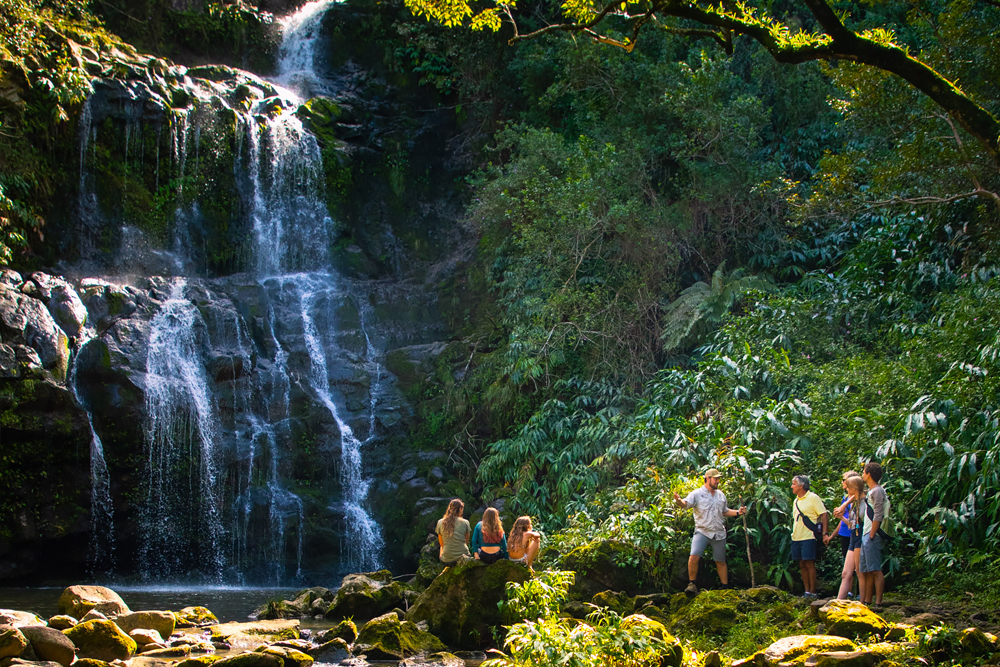
Photo by Andrew Richard Hara
Alaska Airlines offers daily service to Hawaii Island (Kona), Kauai, Maui and Oahu.
My father’s tree is a cute little iliahi, a sandalwood that is barely a foot tall. I’ve planted it in the crumbly cinnamon-colored volcanic soil at 2,600 feet up the east slope of Mauna Kea, the world’s tallest mountain (as measured from its seafloor base), in a little clearing amid 50-foot ohia and koa trees. Dad would be happy with this memorial planting. He was a geologist, avidly interested in travel and the natural world, and supported my own adventures in those realms.
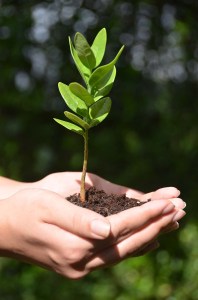
We chant in the calm morning, led by Kekaiokalani Naone, a Hawaiian cultural practitioner: “I ola no oe, I ola no makou nei.” (You live so that we may live.) This blessing is a traditional Hawaiian planting invocation. In this case it’s for the tree, though I reflect on how it applies to my father, too. He passed on six years ago, but my understanding of many indigenous beliefs is that our ancestors are with us every day—even on this day, as I work here with Hawaiian Legacy Reforestation Initiative, the organization guiding this planting project. It’s an activity popular with visitors to Hawaii Island: The “Planter’s Tour” of the company’s midmountain forestland near the Hamakua Coast is an opportunity for guests to help restore native woodlands on the island while they experience a scenic excursion.
This activity is a modest example of a concept known as kuleana that’s gaining prominence in the Aloha State—a philosophy that promotes a heightened awareness of heritage, culture, conservation and safety. State tourism authorities, lodging and activity providers, community leaders and government officials are cultivating the idea in order to protect the things that make Hawaii special. They are asking guests to the Islands to embrace the effort.
“We believe our visitors care about perpetuating the uniqueness of this place,” explains Jay Talwar, chief marketing officer at the Hawaii Visitors and Convention Bureau (which is part of the Hawaii Tourism Authority).
Like many Hawaiian words, “kuleana” is a complex term that is difficult to express concisely in English. Kuleana embraces multiple concepts, including integrity, responsibility, stewardship, courtesy, tradition and respect for nature (and natural hazards).
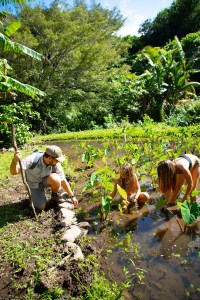
On one level, kuleana can be illustrated by the example of taking responsibility for your family’s safety around the ocean—being alert at all times in or near the water, not taking the sea for granted, not turning your back on the waves. And if you are less than an expert ocean swimmer, choosing beaches with lifeguards.
“If in doubt, don’t go out,” says Jason Cohn, president of Hawaii Forest & Trail, one of the biggest tour operators in the state and a purveyor of adventures on Hawaii Island and Oahu. The company’s offerings range from volcano-oriented day trips to waterfall hikes along little-traveled streams that plunge down from the island’s volcanic peaks.
Similar exercise-good-judgment principles apply to hiking in the Islands. You want to be sure you carry essential gear, mind the weather, be watchful that you only enter lands that are open to you, respect the landscape and its history … and enjoy your experiences.
On another level, kuleana is about seeking experiences that enhance your knowledge of natural and cultural history. I join a Hawaii Forest & Trail tour led by Cohn up a hillside on the north end of Kohala, the oldest of Hawaii Island’s volcanoes. Here, the outfitter takes visitors on walks in a small, privately owned gulch in the community of Hawi. We cross a trestle over the Kohala Ditch, an irrigation flume that has carried water to crops since the early 1900s—and Cohn tells us about the history of local sugar cane farming. We visit a small clearing where we can see traditional Hawaiian food plants such as kalo (taro), breadfruit, banana and sweet potato, all growing in a restored farming terrace. We navigate dense, dark stands of strawberry guava, an invasive nonnative plant that has overtaken much of Hawaii’s original forest and that people work to remove. And we learn the safe way to approach and plunge into a shimmering pool beneath a small waterfall—watching our footing on slick rocks and checking carefully for hazardous rocks above and below the water’s surface.
“Amazing how cool and refreshing it is,” Cohn enthuses. Immersing visitors in Hawaiian lands and heritage, he believes, helps create context that will boost a sense of place, which in turn leads to greater care for the Islands—and an enhanced vacation experience.
Cohn is one of 15 community leaders whom the Hawaii Tourism Authority and Hawaii Visitors and Convention Bureau have enlisted as spokespeople in videos designed to help visitors understand and practice kuleana. Ocean experts, cultural practitioners, artisans, business owners and journalists all explain why the Islands are unique, and how visitors can help keep them that way. Visitors can look for the film clips on, among other places, Alaska Airlines flights to Hawaii. Kuleana Campaign videos can also be found on YouTube.
In one video, Oahu conservationist Ocean Ramsey advises you to use reef-safe sunscreen. Coral-killing sunscreens are banned in Hawaii, but visitors may unwittingly bring unsafe products from home. In another video, Maui meteorologist Malika Dudley urges you to make sure you’re signing up for a private accommodation that is legitimately licensed for rental. In yet another, Kauai-based cultural practitioner Sabra Kauka suggests devoting some time to volunteer work that helps preserve Hawaii.
That’s what I do one morning at Hawaii Volcanoes National Park, one of the state’s highest-profile destinations. This time, I’ve enlisted in the invasive-species battle against a plant that at first glance may seem quite desirable. Himalayan ginger’s tall stems with glossy evergreen leaves are topped by attractive spires of fragrant flowers in rich yellow and orange. It’s a ubiquitous landscape plant in the Islands, seen in many backyard gardens. But it’s also an aggressive plant that has escaped its confined landscaping uses and is outcompeting native species in some areas.
“Amazing what a difference our effort makes,” observes crew leader Jane Field of the newly open, sun-strewn little clearing I’ve made in the woods about a mile from the park’s visitor center. I worked on one ginger patch while others tackled nearby areas. Using big pruning shears, I cut 6-foot ginger spires and stacked them carefully where they wouldn’t suffocate little native plants struggling to grow. I yanked out a few invasive guava seedlings, as well, trying to make room for the ferns and flowering shrubs that are endemic to the forest.
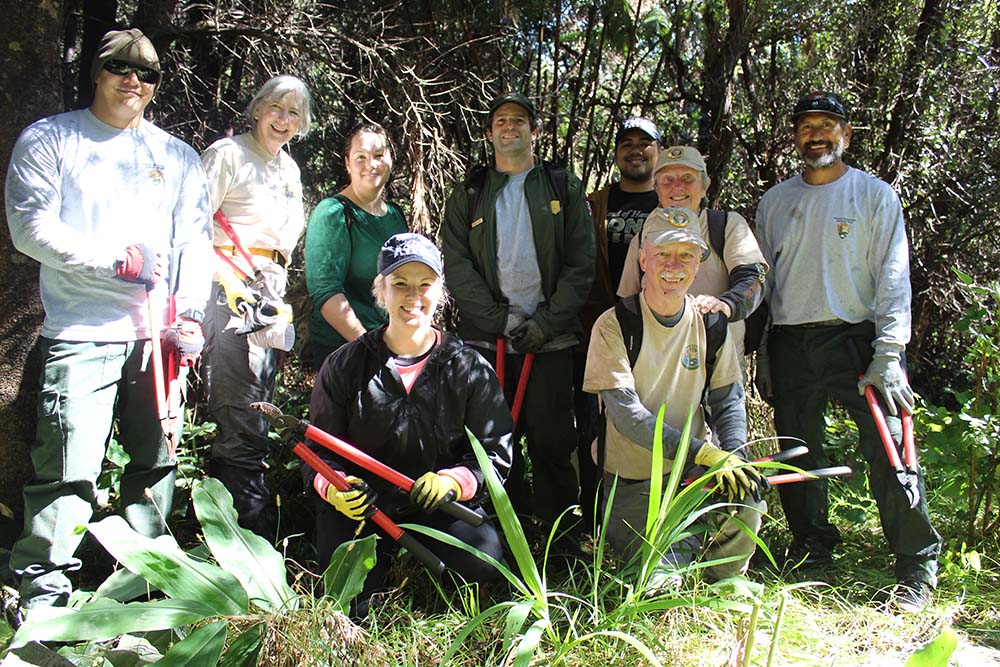
Field and her husband, Paul, lead weekly work sessions at the park under a program called Stewardship at the Summit. It’s one of dozens of volunteer endeavors visitors are welcome to participate in.
If even a small portion of Hawaii travelers took part in such activities, the effect would be enormous. With more than 10 million visitors a year—about a third of them from foreign countries—Hawaii is among the most popular and best-known travel destinations on Earth. Each year, travel contributes about $20 billion directly to the state’s economy, a fifth of all economic activity in the Islands.
Hawaii residents and community leaders welcome the visitors who reach the chain of islands; the Aloha State is known worldwide for its nickname. Aloha means, among other things, “welcome.” But, as Talwar points out, the meaning of “aloha” also includes respect and care, as does the meaning of “kuleana.”
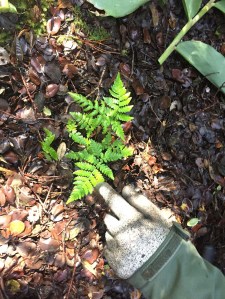
Hawaii is one of many destinations asking guests to be more conscious of their actions while traveling. Responsible-travel campaigns are taking hold around the world, from Canada to Italy to Peru. The Republic of Palau, a small Pacific Island nation, stirred global notice when, in 2017, it enacted the Palau Pledge that all visitors are required to sign before entering the country. This pledge, addressed to the children of the nation, is stamped in passports and compels signees to tread lightly and respectfully.
Most destinations opt for Hawaii’s approach, which is to promote nonmandatory cooperation in the hope that visitors will realize that awareness around sustainability and safety is for everyone’s benefit. Voluntary pledges for visitors were first introduced on Hawaii Island and on Kauai in recent years. Visitors pledge to be pono (translated as “righteous”) when they sign the Island of Hawaii Pono Pledge (ponopledge.com). There is also some hope that this vow, along with Kauai’s Aloha Pledge (alohapledge.com), may inspire a statewide version tied to the Kuleana Campaign and its awareness videos.
“Hawaii touches your heart—and we all want to protect that,” says Sue Kanoho, executive director of the Kauai Visitors Bureau. “We hope these videos plant the seed for people to be more aware of the people and the place.”
Kauai has struggled with unwelcome behaviors, such as large numbers of visitors encroaching on private land or crossing barriers to access dangerous waterfalls. The Kauai Visitors Bureau and Hawaii Tourism Authority discourage geotagging, a practice of labeling locations where photos were taken, which has been linked to accidents, trespassing and overcrowding. Authorities ask that, if you find a special spot, you take pictures as mementos, and share them judiciously. They request that you not post something that could draw thousands to a steep cliff, or onto private or sacred land.
“Would you go up to somebody’s house, open the door and walk in without knocking?” asks Puni Patrick, a kumu hula (hula teacher) and Hawaiian cultural practitioner on Kauai who harvests salt at an ancient salt-pond complex near Waimea on Kauai’s south shore. Located next to a state park popular with campers and picnickers, the salt-pond complex is not an appropriate area for passersby to simply wander into.
Hawaiians have been making salt here for many centuries. It is a treasured place where more than 20 families now continue the annual salt-making heritage that once was a crucial art for those who thrived in the tropics, without refrigeration. According to legend, the goddess Pele came by on her search for a home in the Islands, and the salt-making ponds epitomize the amazing indigenous Hawaiian lifestyle that enabled people to live self-sufficient lives in these islands. Some families who enter the salt-pond area with guests first perform a chant/song that asks permission and calls on the spirits of those who have worked here for centuries.
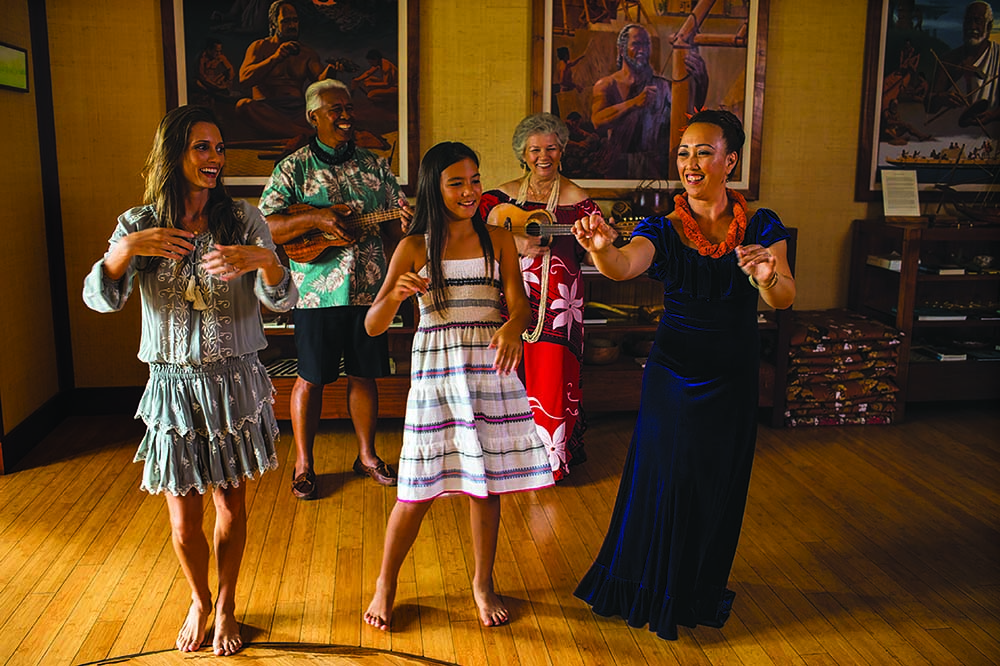
While the lands, waters, wildlife and other physical attributes of the Islands are among the many ingredients that make Hawaii unique, the indigenous cultural and spiritual heritage of Hawaii is perhaps its most distinctive feature—one that is easy for visitors to observe today.
The Hawaiian language, for instance, is a beautiful, evocative tongue enjoying a marvelous renaissance. Linguistic learning opportunities for visitors include quick tips on pronouncing words from bartenders at The Olelo Room, a Hawaiian-language-inspired lounge at Aulani, A Disney Resort & Spa on Oahu. They also include whole weekslong classes tailored to the many mainlanders who spend several months in the Islands in winter. The language app Duolingo also has Hawaiian capabilities.
Hula classes, once rare, are ubiquitous now; among the most popular are the sessions throughout the week at Waikiki’s Royal Hawaiian Center, where guests learn that hula is a deeply meaningful cultural practice.
Nearby, at The Royal Hawaiian, a Luxury Collection Resort, guests can join a sunrise ceremony in which participants immerse themselves in the ocean and perform a chant that thanks the sun for its return, and blesses our ancestors for bringing us to this day. My participation a few years ago in this type of ceremony, at The Ritz-Carlton, Kapalua, on Maui, was the first time I invoked my father’s spirit in the Islands.
“I want people to enjoy what I have enjoyed for 70 years, in the way I was brought up,” says Earl Kamakaonaona Regidor, cultural adviser at the Four Seasons Hualalai on Hawaii Island, and a Kuleana Campaign ambassador.
Regidor’s mother was full-blooded Native Hawaiian, and her guidance helped him create a sense of kuleana that is specific to the island he inhabits. Visitors to the resort’s Kaupulehu Cultural Center can learn words in the Hawaiian language, lauhala weaving, lei-making or ukulele playing—many of these taught by Regidor himself.
Regidor credits his ancestors for teaching him the kuleana way of life. His father, for example, would bring him down to the shore (at the exact location where Regidor now works) and they’d fish … for just a half-hour. Regidor recalls asking, “Dad, why did we come all the way here just to spend a half-hour?”
“Because it’s right to take only what you need—not what you want,” his father told him.
“Respect the people, the culture and the history,” Regidor urges. “My mother taught me: ‘Don’t live in the past, but learn from it.’
“She said it best when you are talking about kuleana,” he muses. “ ‘Respect everything,’ she told me. ‘Everything.’ ”
Eric Lucas lives on San Juan Island in Washington state. This story originally appeared in ALASKA BEYOND MAGAZINE—JANUARY 2020.

